Correlation is a statistical approach to determining the direction and the magnitude of the relationship between two variables. However, the existence of extraneous variables that influence the correlation between two variables necessitates the use of partial and semi-partial forms of correlation (Biddix, 2018). Based on data collected from 103 students, regression analysis shows that anxiety and revision time is the two predictors of exam performance. Revision time has a direct influence because it explains 15.7% of the variation in exam performance. However, revision time has an indirect influence because it accounts for 50.2% of the variation in anxiety, which in turn explains 19.4% of the variation in exam performance. Bivariate correlation shows that revision has a negative relationship with anxiety (r = -0.709) but a positive relationship with exam performance (r = 0.397). Anxiety has a negative relationship with exam performance among students (r = -0.441). Since there are intricate relationships between anxiety, revision time, and exam performance, this coursework seeks to evaluate the impact of extraneous variables through partial correlations.
Anxiety and Exam Performance with Controlled Revision Time
After controlling for the effect revision time, partial correlation analysis (figure 1) shows that exam anxiety (74.34±17.18) has a weak negative relationship, which is statistically significant, with exam performance (56.57±25.94), r = -0.247, p = 0.012. Coolican (2017) holds that the significance of partial correlation implies that the third variable has no significant effect on the relationship between two variables.
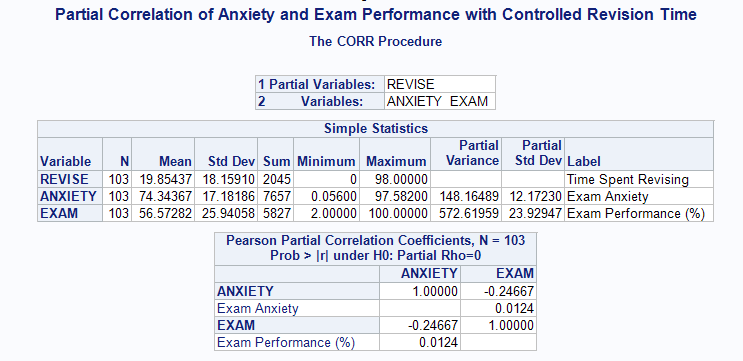
Revision Time and Exam Performance with Controlled Anxiety
Controlled Effect of Anxiety on the Relationship between Revision Time and Exam Performance Partial correlation analysis when anxiety is controlled (figure 2) shows that revision time (19.85±18.16), and exam performance (56.57±25.94) have a very weak, statistically insignificant, positive relationship (r = 0.133, p = 0.184). Gravetter and Wallnau (2016) explain that the insignificance of partial correlation implies that a third variable mediates the relationship between variables. In this case, anxiety mediates the relationship between revision time and exam performance.
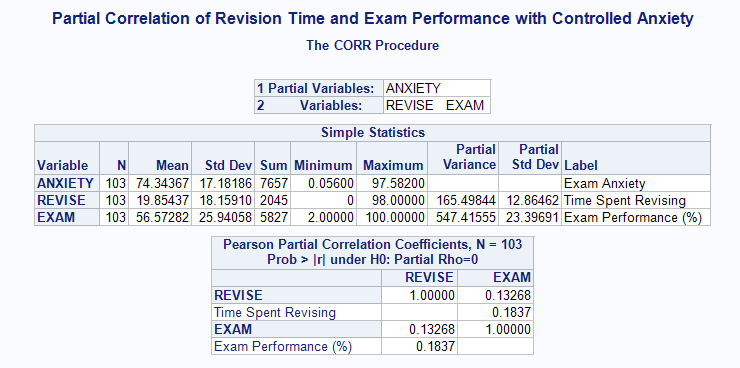
Scatter Chart of Anxiety and Exam Performance
Figure 3 is a charter plot depicting that anxiety and exam performance have a negative relationship with apparent deviations of data points from the trend line.
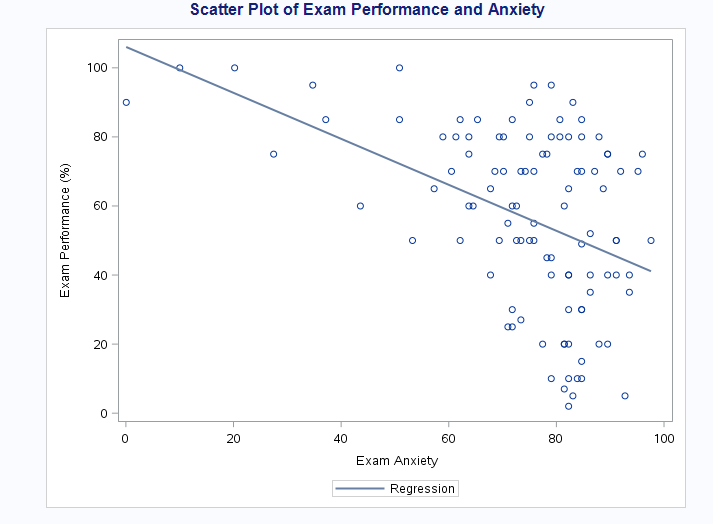
The Same Correlations but Controlling for Gender
With the controlled effect of gender, partial correlation analysis indicates that anxiety (74.34±17.18) and exam performance (56.57±25.94) have a statistically significant negative relationship (r = -0.441, p = 0.000).
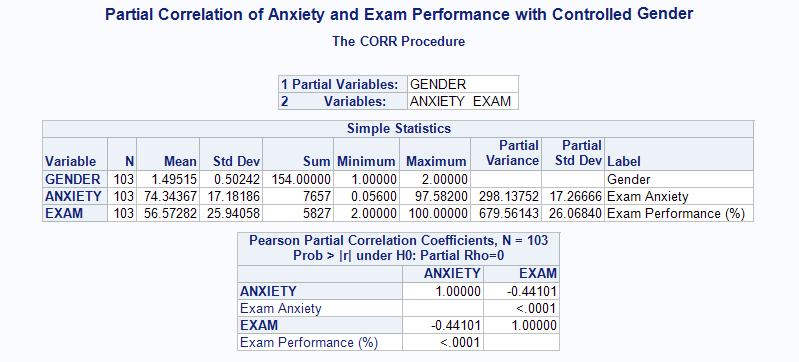
Controlled Gender in the Relationship between Revision Time and Exam Performance Figure 5 indicates a partial correlation of gender in the relationship between revision time (19.85±18.16) and exam performance (56.57±25.94), which is moderate, positive, and statistically significant (r = 0.399, p = 0.000).
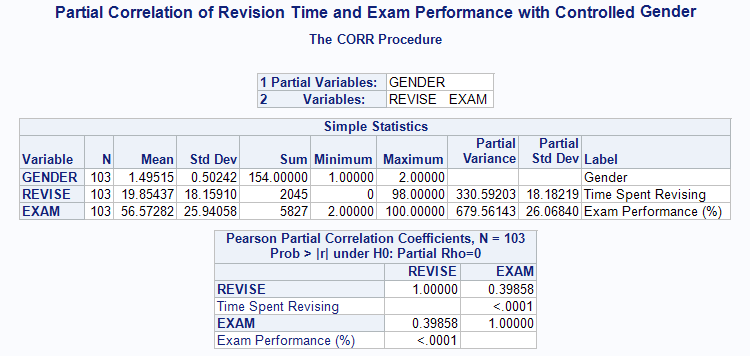
Gendered Trend Lines of Scatter Plot
The scatter plot (figure 6) shows that females have a stronger positive correlation than males in the relationship between revision time and exam performance.
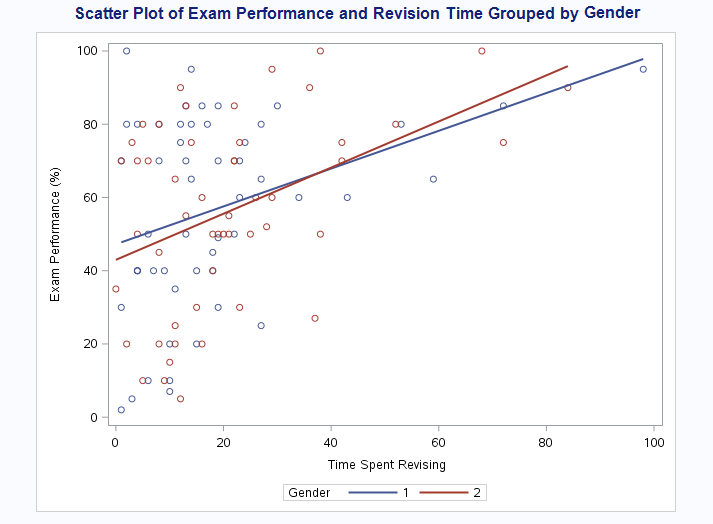
Gendered Trend Line of Exam Performance and revision Time Figure 7 reveals that males have a stronger negative relationship than males in the correlation between anxiety and exam performance.

Conclusion
Correlation analysis reveals that anxiety and revision time has negative and positive relationships with exam performance, respectively. Partial correlation analysis shows that anxiety has a negative relationship that is statistically significant when controlled for revision time. In contrast, revision time has a statistically insignificant positive relationship with exam performance when controlled for anxiety. This relationship shows that anxiety mediates the relationship between revision time and exam performance. Partial correlations with the control for the effect of gender indicate that anxiety and revision time have statistically significant negative and positive relationships with exam performance, correspondingly. Scatter plots show that gender influences the relationships between anxiety, revision time, and exam performance.
References
Biddix, J. P. (2018). Research methods and applications for student affairs. London, England: John Wiley & Sons.
Coolican, H. (2017). Research methods and statistics in psychology (6th ed.). New York, NY: Psychology Press.
Gravetter, F. J., & Wallnau, L. B. (2016). Statistics for the behavioral sciences (10th ed.). New York, NY: Cengage Learning.